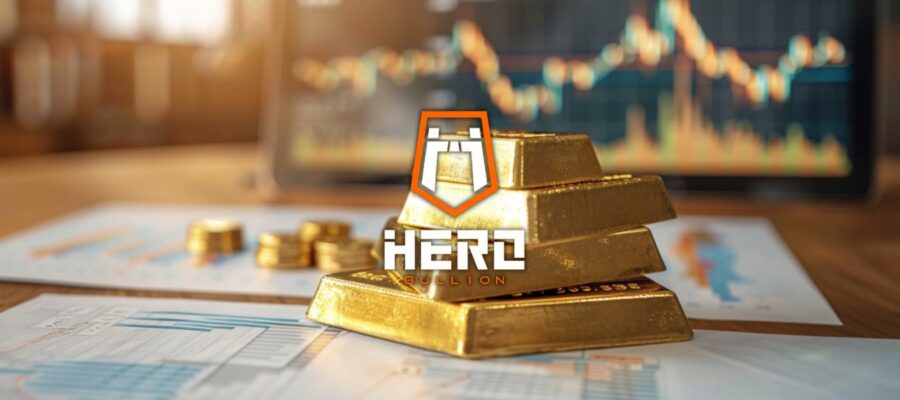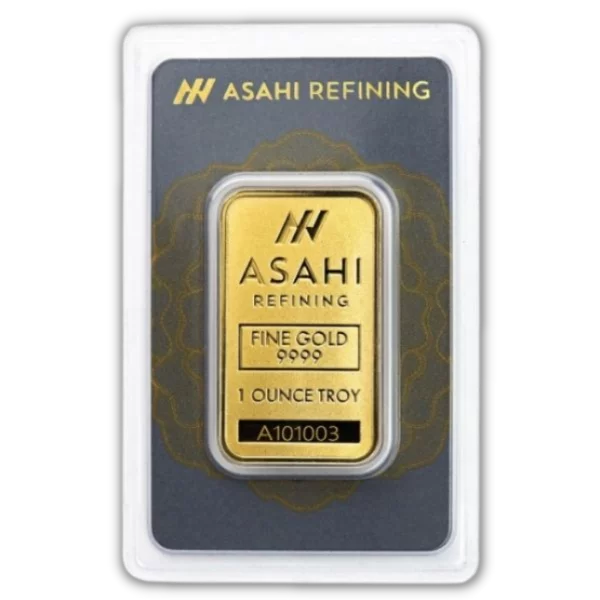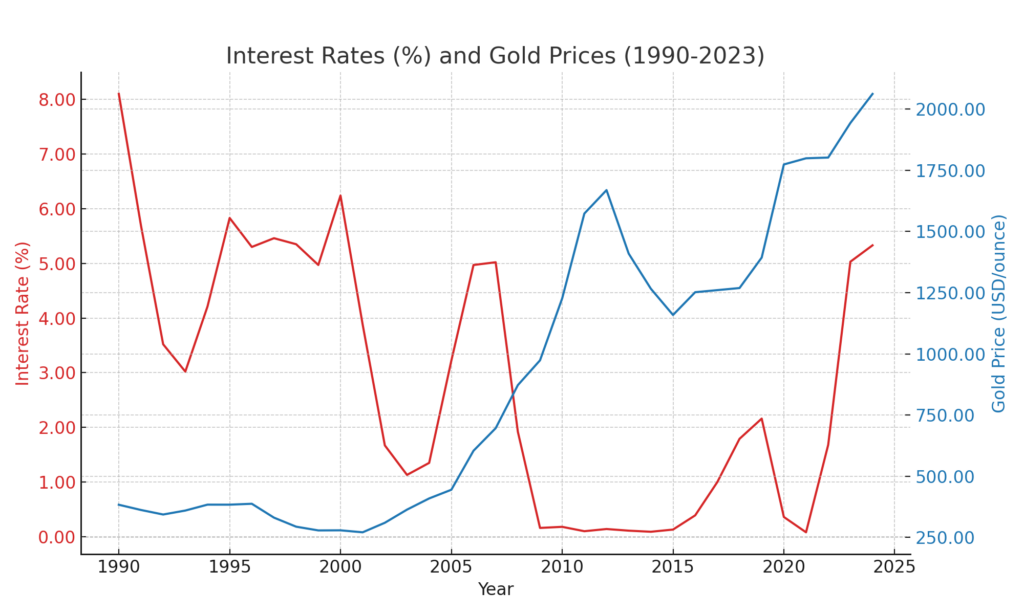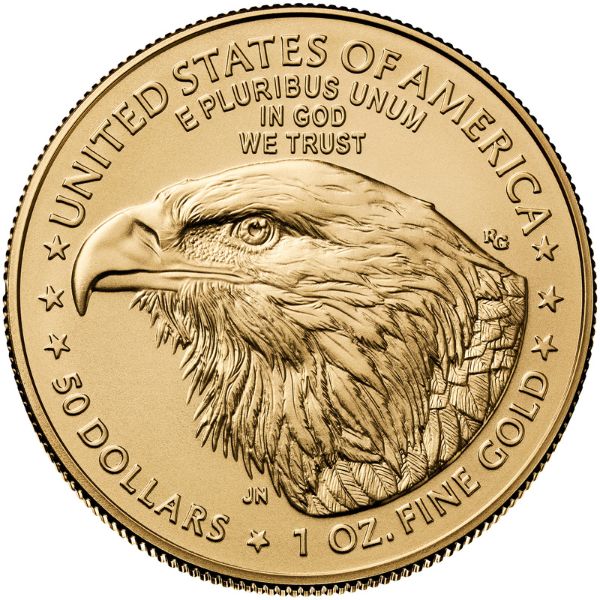How Do Gold Prices Correlate With Interest Rates?

At a Glance:
- Some investors believe that low interest rates lead to higher gold prices.
- Other experts call this assumption into question.
- Investor speculation may drive gold prices more than interest rates.
Interest Rate Cuts Are Coming – What Does This Mean For Gold?
Rumors of interest rate cuts later this year drove gold past several all time highs in March. Despite no rate reductions at the Federal Reserve’s March meeting, Fed Chair Jerome Powell says eased rates are still in the cards for 2024. By his projections, the economy is on track to justify three rate cuts by the end of the year.
How do gold prices correlate with interest rates? Some economists believe gold prices are negatively correlated with interest rates, but the data suggests that interest rates alone aren’t a solid predictor of gold price trends.
What Are Interest Rates?
Technically speaking, the Federal interest rate refers to the rate charged between commercial banks who lend one another money overnight. In practice, lower interest rates make it cheaper for consumers and businesses to borrow money.
Federal interest rates are determined by the Federal Reserve. Also known as the Fed, this group of government officials and analysts meets at least eight times per year. Interest rates don’t change every Federal Reserve meeting. To determine future interest rates, the Federal Reserve’s experts consider the overall strength of the economy, inflation figures, employment data, and more.
These interest rates are a major source of speculation for investors in all markets – including gold.
Why Interest Rates Matter
For investors, interest rates matter because of their strong correlation with stock market performance. When interest rates decrease, stocks tend to become more valuable. High interest rates increase the cost of borrowing money, which motivates businesses (and consumers) to cut back on spending. Low interest rates, however, incentivize businesses and individuals to spend more.
Although predicting market movements is a bit more complicated than comparing interest rates, there’s solid evidence to support the claim that low interest rates are good for long-term stock-centered investment portfolios.
Gold is different. Some research suggests that low interest rates are good for gold, but some economists aren’t convinced of the correlation between these gold and federal interest rates.
How do Gold Prices Correlate With Interest Rates?
Gold’s correlation with interest rates is a complicated issue. On one hand, gold has sometimes performed exceptionally well during periods of easing interest rates. The past few years have thrown this notion into question, though. Interest rates may be a good general indicator that gold could rally, but experts warn against relying too heavily on this assumption as the global market continues to evolve.
The Traditional Wisdom: Rate Cuts Are Good For Gold
Traditional wisdom holds that lower interest rates lead to higher gold prices. According to some economics, a high interest rate environment makes traditional assets like bonds more attractive to investors. It is true that bonds perform better when interest rates are high. When interest rates are lower, gold sees less competition from assets that thrive under elevated interest rates.

It’s also worth noting that one of gold’s biggest price runs coincided with a stark reduction in interest rates starting in 2008. The radical spike in gold prices during easing interest rates in the late 2000s has helped to support the commonly held position that gold is negatively correlated with the federal interest rate.
Another Perspective: Gold is Sometimes Correlated With Interest Rates
This traditional wisdom is being called into question. While the relationship between gold and interest rates seems clear from price trends in the mid-late 2000s, historical data tells a different story. In fact, gold prices have occasionally trended up as interest rates climb.
Gold’s price is determined by a number of different factors, and it’s hard to pinpoint any one stimulus as a direct predictor of how gold might move.
If this doesn’t sound like a clear answer, that’s because there isn’t one. Economists and financial advisors still debate whether gold prices are directly correlated with interest rates.
A Historical Approach: Gold and Interest Rates
To really understand how interest rates influence gold prices, we’ll need to take a closer look at both data sets. The biggest evidence that gold is negatively correlated with interest rates comes from the mid-2000s, when gold prices skyrocketed and interest rates hit the floor.
Both before and after this brief period of time, things get a bit trickier to track. Below, we’ll compare gold prices and interest rates from 1990 to 2023.
Historical Charts: Comparing Gold Prices to Interest Rates

The graph above displays gold prices and interest rates from 1990-2023. Interest rates are quoted by percentage and have been tracked based on yearly averages. We did the same thing for gold, taking the average closing price of gold per troy ounce each year to give investors a better idea of how the precious metal has performed in the last 33 years.
Until the year 2000, there wasn’t much of a correlation between gold prices and federal interest rates. Gold prices remained relatively steady until 2002, while interest rates fluctuated.
But starting in 2005, gold prices began to climb. The metal really took off in 2006, rising from an average price of $444.99 per ounce to $604.34. From there, gold soared. At the same time, interest rates decreased drastically, dropping From 5.02% in 2007 to .16% in 2009.
Interest rates steadied until 2016, when they started to rise once again. Gold prices kept increasing during this period between 2016 and 2019, despite interest rates climbing consistently.
Gold’s price appreciation heightened between 2019 and 2020, which coincided with the massive rate cuts that happened during the outbreak of COVID-19 that same year. Since federal interest rates bottomed out in 2021 at .08%, both rates and gold’s price have climbed dramatically.
Are Interest Rates a Key Indicator for Gold?
What does the data suggest about gold’s relationship with federal interest rates? It’s tough to say, and economists aren’t quite sure what to make of the past decade of gold prices and interest rate hikes.

The mid-2000s made a compelling case for gold’s negative correlation with interest rates, but comparing the data from 2015 paints a different picture entirely. Ultimately, interest rates can influence the price of gold, but it’s just one of several factors that help determine gold’s spot price.
Investor Speculation Drives Gold Prices
Even if gold isn’t as strongly correlated with interest rate cuts as some analysts believe, speculation concerning interest rates is still a major market mover. The commonly held belief that gold performs well in low interest rate environments drives gold’s price up whenever the market feels that the Fed might cut rates.
We saw this trend firsthand in March, when rumors of interest rate cuts from the Federal Reserve led gold to smash through five all time highs in just a few weeks. Ultimately, market speculation concerning gold’s relationship with interest rates may have a bigger impact on prices than the correlation itself.
What to Expect For Gold and Interest Rates in 2024
Fed Chair Jerome Powell recently reaffirmed his position that interest rate cuts are coming sometime in 2024, adding fuel to gold’s bull run in the process. According to the Federal Reserve, the United States may see three rate reductions before the end of this calendar year.
The Federal Reserve is scheduled to meet again on May 1. CME’s FedWatch projects only a 12.5% probability of rate cuts during that meeting, but that figure climbs to 68.4% for the Fed’s June 12 sit-down.
For now, gold investors should closely watch the Federal Reserve – and Powell – for more hints at when 2024’s lower interest rates might happen. Even if gold isn’t as correlated with rate cuts as some people suggest, it’s clear that 2024’s gold price-action is largely dependent on when and if the Fed decides to ease back on interest rates.
You might also be interested in:
About The Author
Michael Roets
Michael Roets is a writer and journalist for Hero Bullion. His work explores precious metals news, guides, and commentary.
